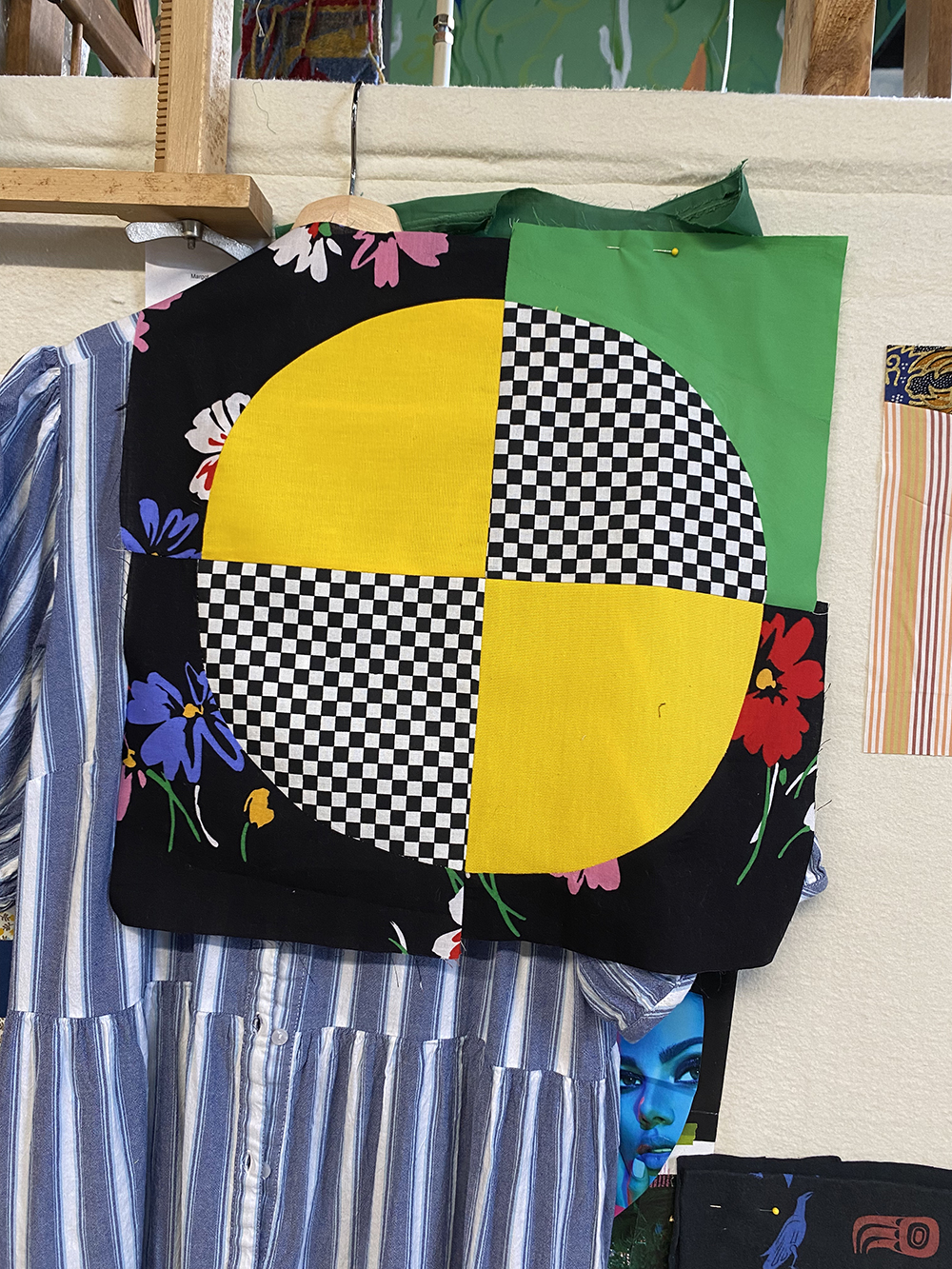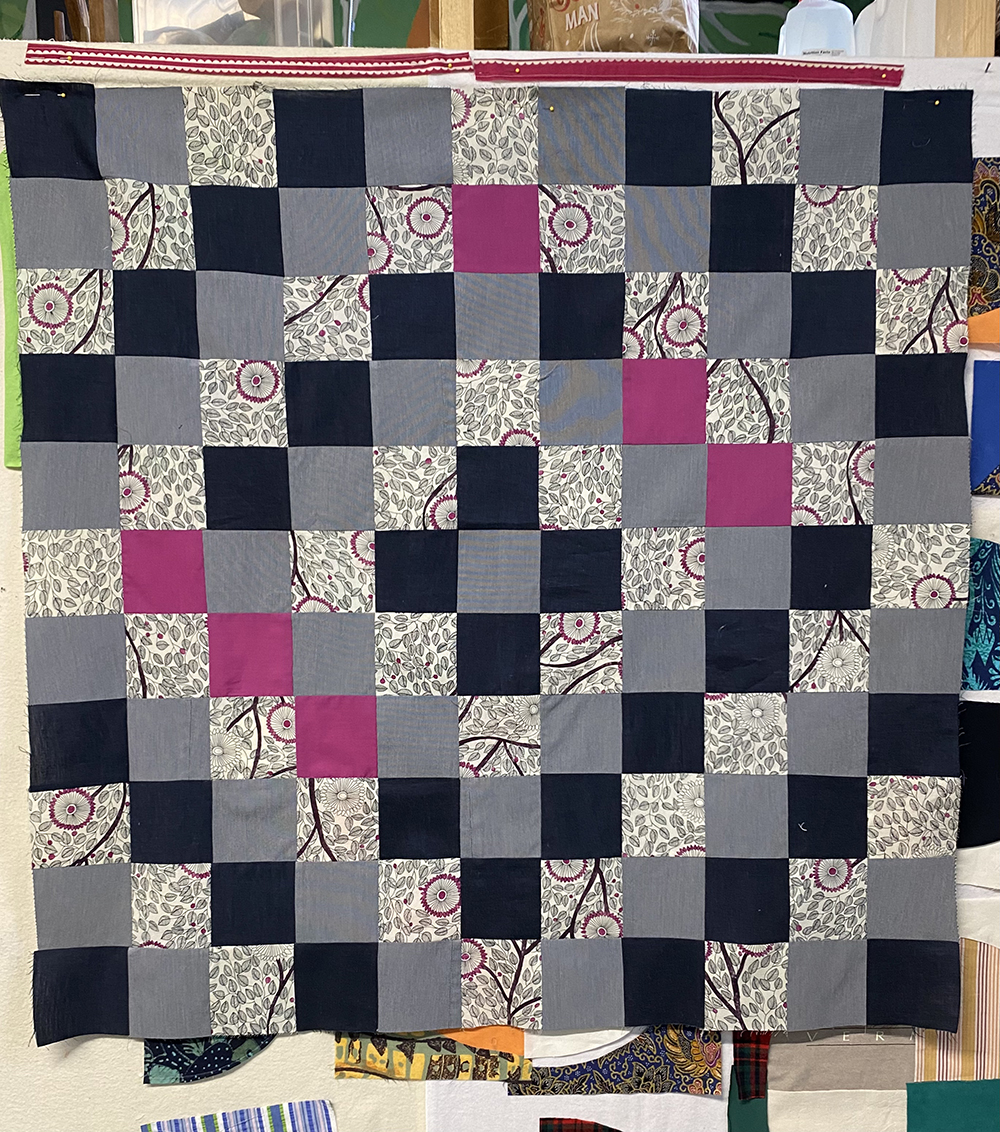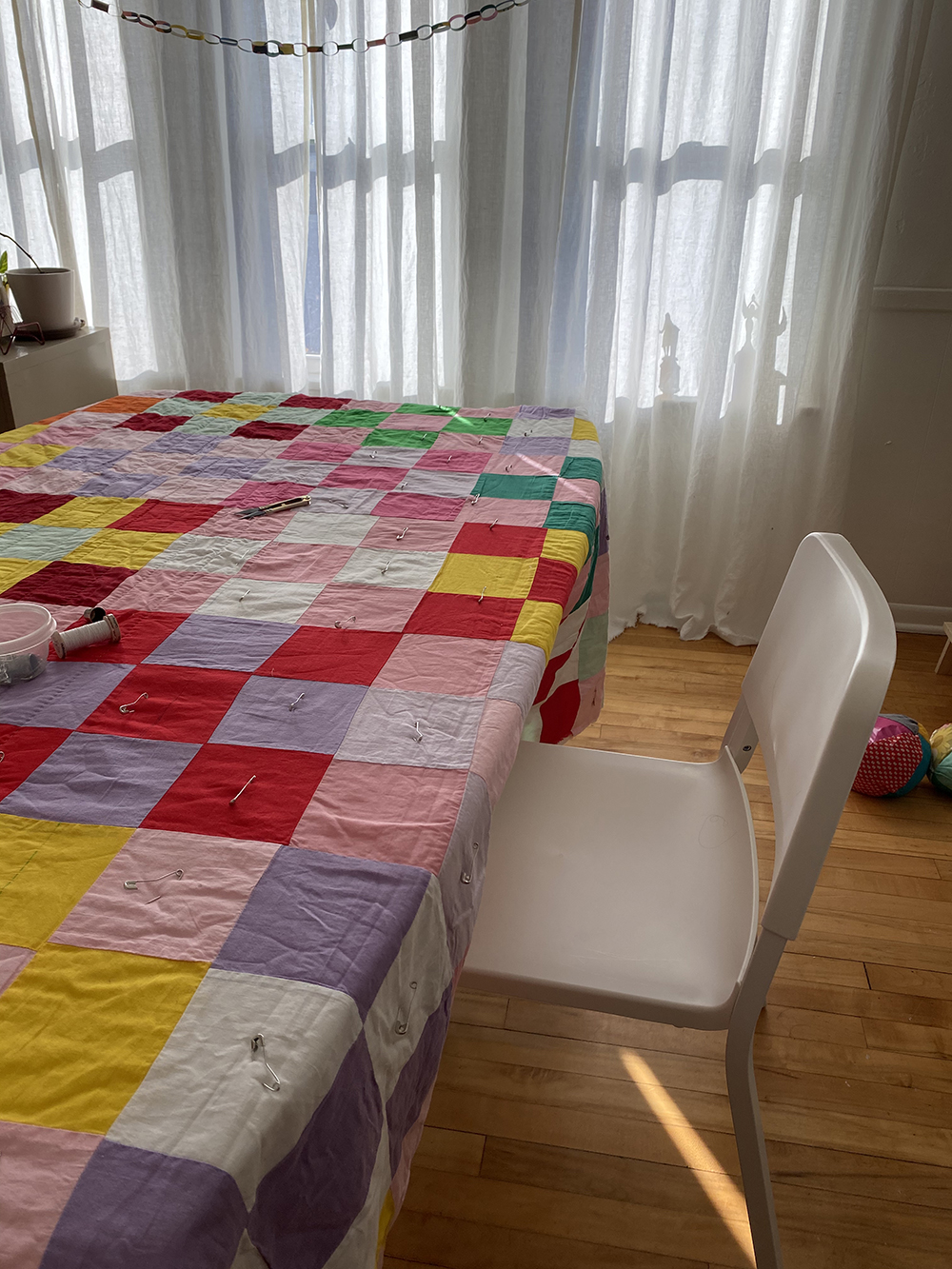
An Alternative to Consumption

In her latest post, Resident Artisan Laura Brown looks at the beauty and necessity of using secondhand and salvaged material in her work.
Audiobooks and podcasts are my frequent companions in the studio, and lately I have been listening to Aja Barber’s Consumed: Colonialism, Climate Change and Consumerism. She focuses on the fashion industry, and provides an overview of the oppressive histories and current inequities of industrialization and fast fashion.
It is work like Barber’s that helps me articulate more fully why I make every effort to use only secondhand or salvaged material in my quilts and garments, and why I am drawn to processes like mending. I have seen the photos of mountains of cheap, discarded clothing in landfills, the bales of donated clothing sent from the US to markets in Africa. I know the linear life of most garments from factory to store to consumer to landfill is wrong and overwhelming. It takes practice to develop a vocabulary for why I choose the parameters I do for my own consumption and work with textiles.

A quilt top made from three pairs of pants. Two were discarded because of holes beyond repair, one from the thrift store with a leg mysteriously cut off.
I mainly shop second hand for clothes, or I make my own because I know how to, and I have the space and tools needed–this makes it easier to make the time for these projects. When it comes to buying fabric for garments, I rarely buy new. We are fortunate in Minnesota to have a textile warehouse bursting with discontinued and surplus fabrics. For quilting, as a general rule, I have stopped buying fabric altogether. This is partly because I already have so much in my studio to work with, and partly because fabric seems to be one of those things, like books or plants, that are often being given away or traded. I have also developed an aesthetic preference for vintage patterns and hand-dyed colors.

A test quilt square made from fabric from my studio stash. A friend saw it on social media and recognized the black flowered fabric as one she had given me. She said, “I made a skirt from that and I loved it so much.”
Will my one creative practice make a difference in the big picture of global waste and inequity? No. But I believe that we are all connected, and the concerns of people and the earth are connected, and I feel the responsibility of practicing these beliefs by limiting my consumption of new, mass manufactured items–especially when it comes to textiles. Because we wear them every day, and I use them in my creative work, I think about the origins of my clothing and the fabric I sew with often. I think about the people who made them, their working conditions, the fibers they are made from and their life span.

I found this quilt top at a thrift store. I made a back for it, and have been slowly quilting it by hand since the early days of the pandemic.
Craft practices can offer an alternative to consumption (and, let’s face it, sometimes they give us a reason to buy fancy tools and supplies). At its best, craft teaches us ways to find, create, and maintain what we need. It teaches us how to solve problems, develop both self-sufficiency and community. I will never get tired of the analogy of repair and transformation that happens by taking fabric or materials that have been discarded or used up in their initial purpose, and making something new with them. This practical, circular life cycle of materials is at the heart of quilting as a medium. In the same way other craftspeople connect with their materials through foraging or growing, I feel connected to the materials of quilting because I wore them as garments, inherited them from friends, or discovered them at a thrift store.